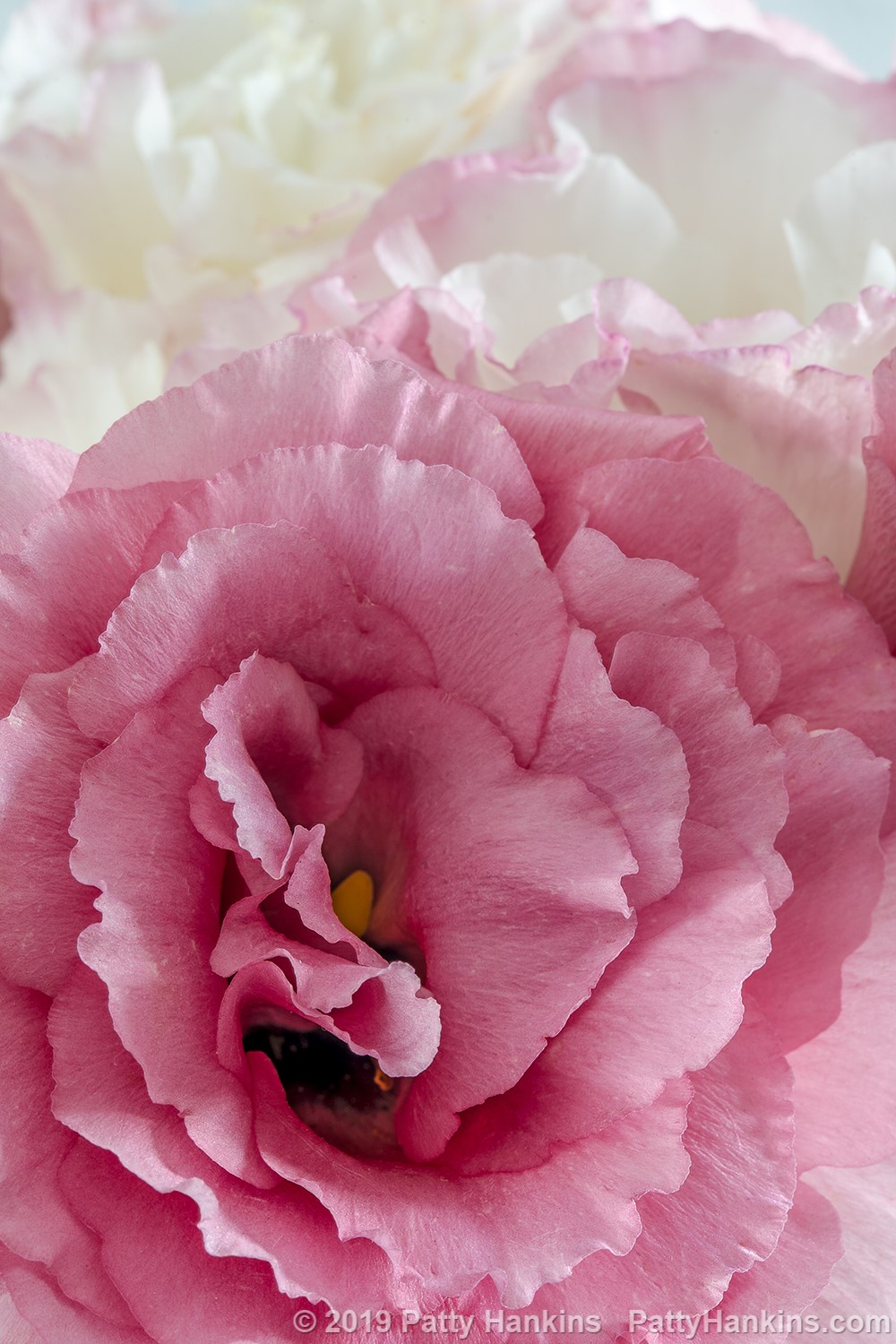
by hankinslawrenceimages | Apr 22, 2019 | Gentianaceae Family, New Photos

Pink & White Lisianthus © 2019 Patty Hankins
I’ve recently added a new photo – Pink & White Lisianthus – to my website at https://beautifulflowerpictures.com/store/pink-white-lisianthus/
I bought these beautiful lisianthus blossoms from one of the local flower farmers here in Maryland. I really enjoy talking to the people who grow my subjects about their farms and sharing with them how I’m going to be using their flowers in my photographs.
When I saw these lisianthus at the market, I loved seeing how some were pink, some were white and some were white with hints of pink. When I brought them together as a bunch, all of a sudden I saw the pink leading back from the front flower into the sea of white in the other blossoms.
This photograph is available matted to 11 X 14 for $ 54 and 16 X 20 for $ 109.
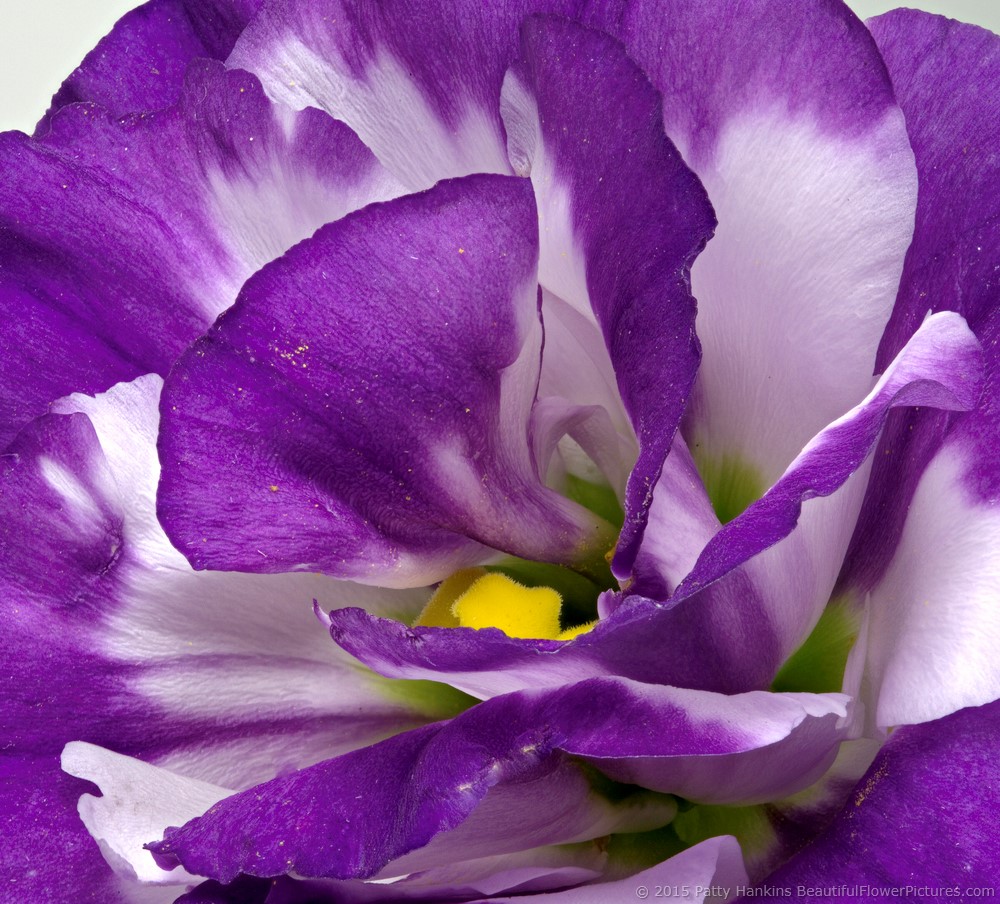
by hankinslawrenceimages | Aug 28, 2015 | Flowers, Gentianaceae Family
Not long ago I bought some purple and white lisianthus blossoms at the local farmers market and took them into my studio. I loved seeing all the layers of petals in the flowers. Here are a couple of my photos of the lisianthus.
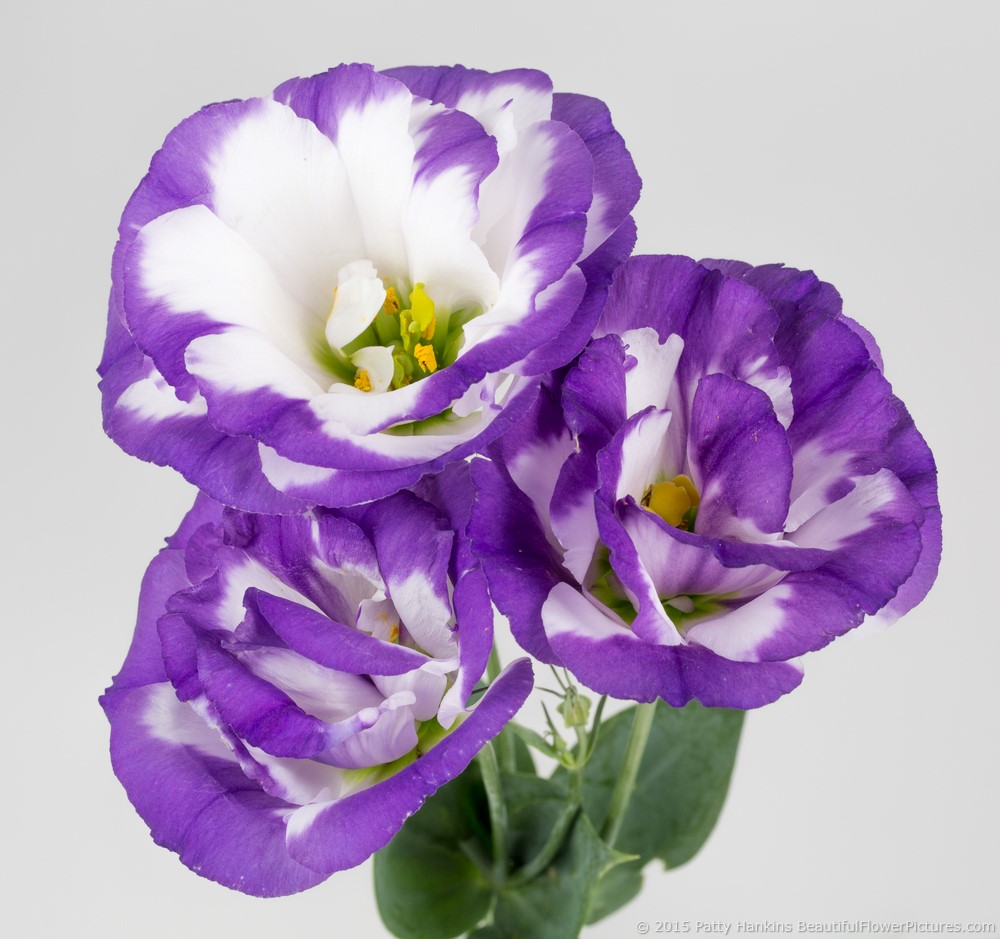
Purple & White Lisianthus © 2015 Patty Hankins
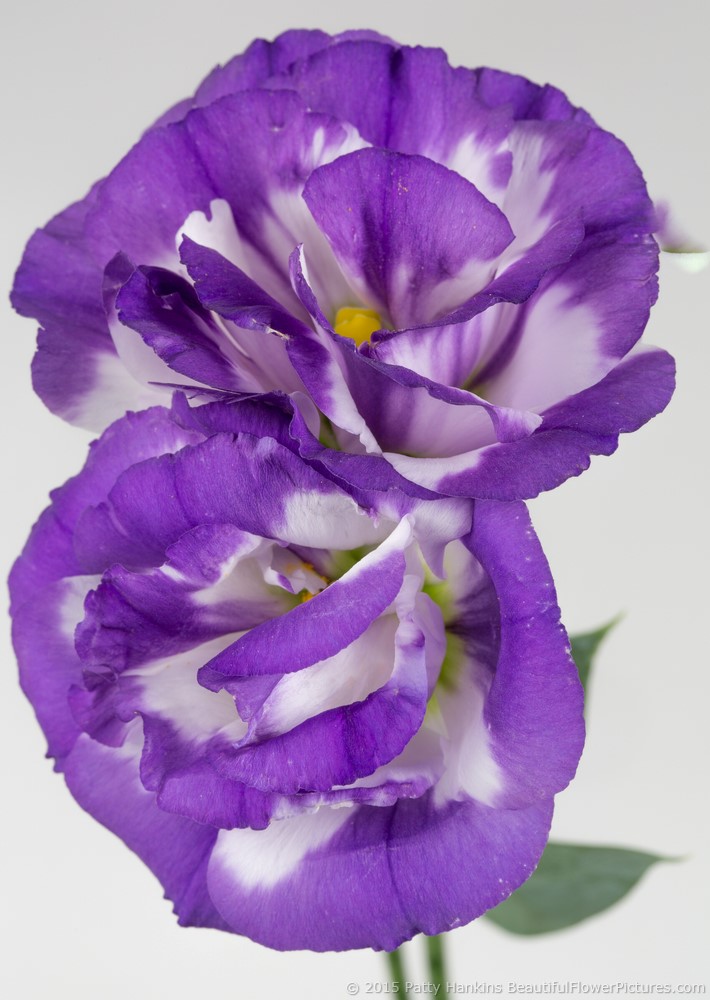
Purple & White Lisianthus © 2015 Patty Hankins
As I photographed them, I realized I wasn’t quite getting the photos I wanted – I just didn’t have the depth of field to get all parts of the flower in focus the way I wanted to. So I decided to take the raw images I would need to create some stacked images of my photo. A stacked image is created when a photographer takes multiple images of the same scene with different focal points in each photo, and then uses software to combine the images into one image with a greater depth of field than any of the original images.
I use Helicon Focus software by HelicsonSoft to create my stacked images. It’s pretty much the industry standard software for creating images like these. In past I’ve tried a few plug-ins for Lightroom and a technique for doing the stacking manually in Photoshop and was just never happy with the results. Once I started using Helicon Focus – I could concentrate on capturing the images just the way I wanted to in the studio – and then let Helicon Focus do it’s magic of combining the images. Once the images are combined, I can do whatever edits I need to do to create my final image. Once I figured out how much faster and better Helicon Focus could do the stacking than I could do it manually – I went ahead and bought the software – and have been having fun creating stacked images
Here’s a stacked image of the same pair of flowers as in the previous image. This version was created using a stack of 18 separate images with 18 specific focal points. I much prefer the appearance of a greater depth of field in this image than in the previous one.
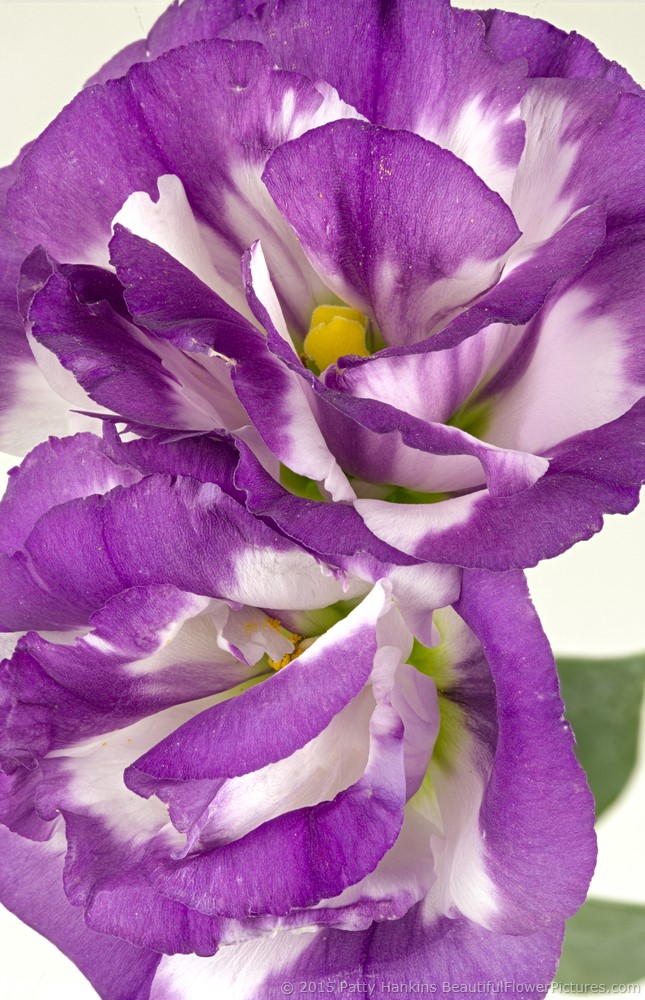
Purple & White Lisianthus © 2015 Patty Hankins
After photographing the pair of lisianthus blossoms, I concentrated on just one flower – taking 19 images with 19 different focal points to create this image.
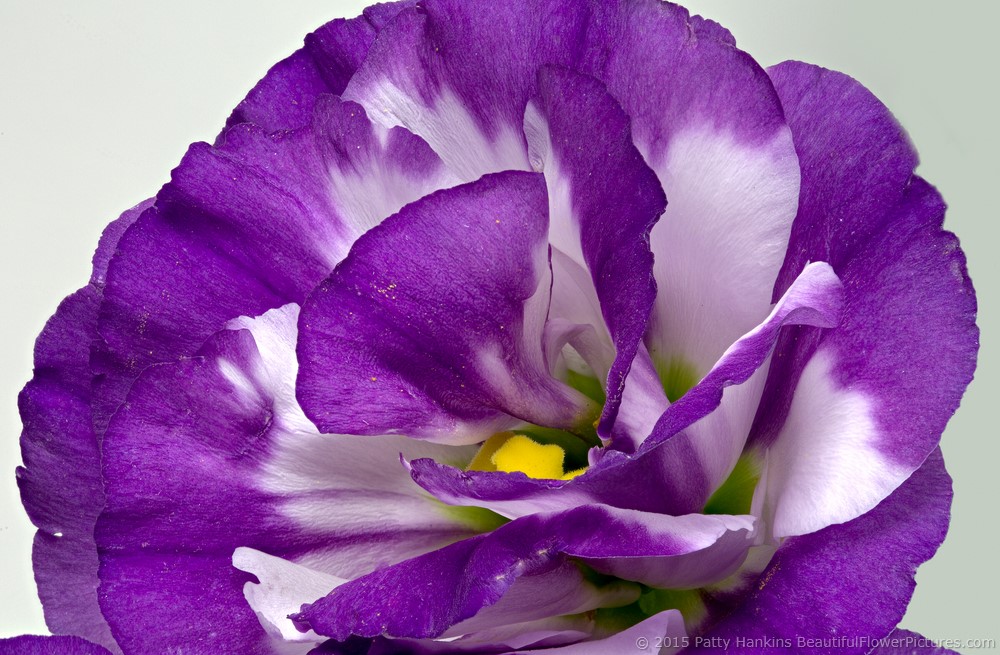
Purple & White Lisianthus © 2015 Patty Hankins
The final photo in the series is just a closer in crop of the previous photo – showing the center of the photo.

Purple & White Lisianthus © 2015 Patty Hankins
Stacking images is a great technique to use when I want to show all the details of a flower in sharp focus – especially when I can’t get the depth of field to do it in camera. Helicon Focus is a wonderful tool for creating these images. It’s not something I do for all my photos – but as I explore it’s capabilities – my guess is I’ll be creating and sharing stacked images more often.
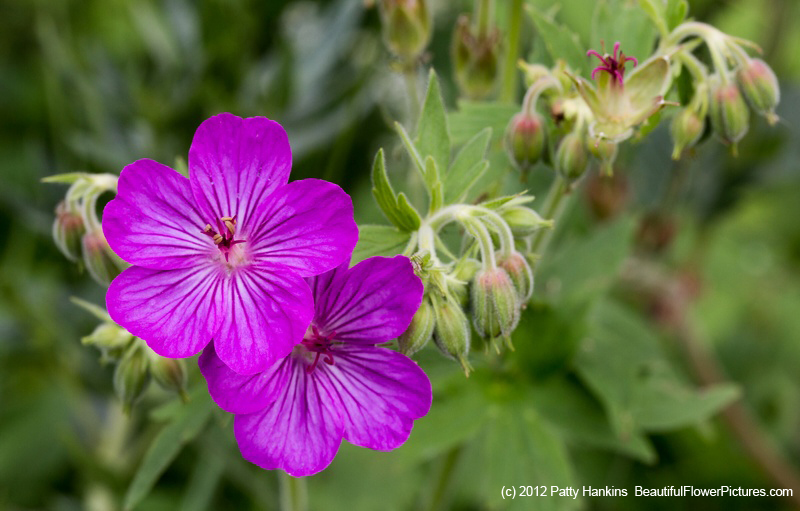
by hankinslawrenceimages | Oct 24, 2014 | 2015 Wildflower Calendar, Flowers, Gentianaceae Family, Wildflowers

Sticky Geranium © 2012 Patty Hankins
Sticky Geranium – Geranium viscosissimum – is one of the wonderful wildflowers I discovered at Glacier National Park a few years ago. When I spotted it growing along the side of the road, I know it had to be a member of the geranium family since it looks so much like the wild geraniums I see in the Smoky Mountains in the spring.
Sticky Geranium is native to much of the Western United States and Canada. A summer blooming wildflower, sticky geranium can grow to 3 feet tall. The stalks of the plant have multiple pink to purple flowers blooming on them all summer long.
I loved seeing the sticky geranium in Glacier, Yellowstone and Grand Teton National Parks. The bright flowers were just wonderful to see as I drove along the roads and hiked the trails.
Sticky Geranium is one of the wildflowers featured in my 2015 Wildflower Calendar. You can order your copy from my website.
by hankinslawrenceimages | Jan 20, 2011 | Colorado, Flowers, Gentianaceae Family, Photo Locations, Wildflowers
Last summer while I was photographing wildflowers in Colorado, I kept seeing groups of really tall plants. Finally on my last day of the trip, I was able to get close enough to some to get a good look at them, and photograph them. Now that I’ve figuredout what they are, I wish I’d spent more time with them.
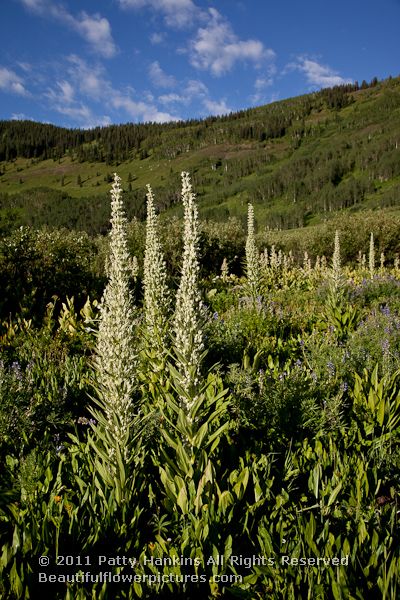 (c) 2011 Patty Hankins
(c) 2011 Patty Hankins
The plants are Frasera speciosa – commonly known as Monument plants, Elkweed or Green Gentian. A member of the Gentianaceae family, it can grow to 8 feet tall! The ones I photographed were probably close to that size. I certainly couldn’t see the tops of them without backing up and looking up. Long thought to be a biennial, research has shown that the Monument plants have a much more unusual life cycle. They are monocarpic plants having a lifespan of up to 80 years – and flowering only once during their lifetime. After they flower, the plants die. Another well known monocarpic plant is the century plant.
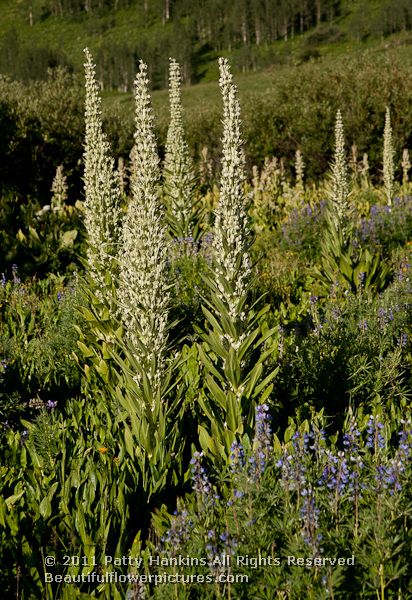 (c) 2011 Patty Hankins
(c) 2011 Patty Hankins
Scientists suspect that environmental factors can cause a mass bloom like was seen in 2010 in Colorado. Research by Dr. David Inouye of the Rocky Mountain Biological Laboratory indicates that 4 years after a wet July & August, the monument plants form the flowering stalks.
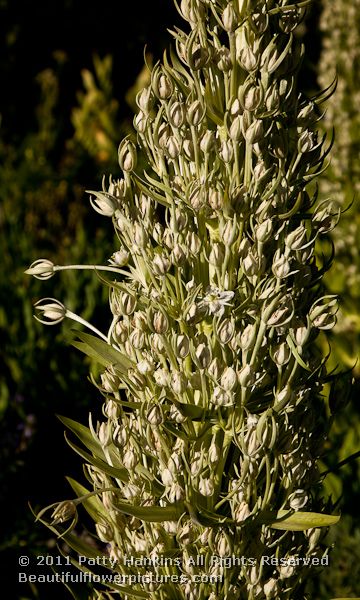 (c) 2011 Patty Hankins
(c) 2011 Patty Hankins
Monument plants are native to much of the western United States. They tend to grow in open mountain meadows, which is where I found them. They can grow to 8 feet tall with pale green lance shaped leaves of up to 18″. The flowers have either four or five sepals, are greenish white with purple glands and stiff hairs. The ones I photographed had four sepals and I didn’t see any of the purple glands. In some photos I’ve seen of the plants, the purple is very distinctive.
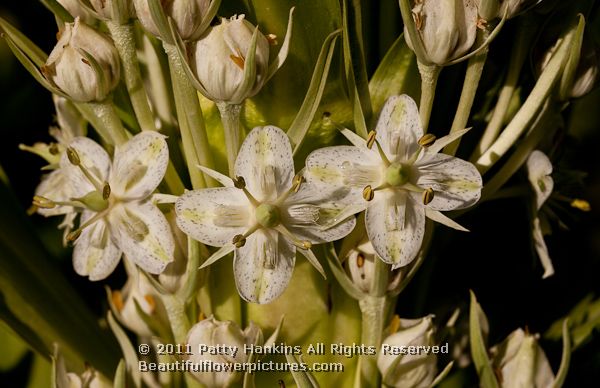 (c) 2011 Patty Hankins
(c) 2011 Patty Hankins
Apparently I was very lucky to have seen this many monument plants blooming in Colorado last summer. I wish I’d been able to identify them earlier in the trip and had taken more photographs of them. Oh well, I can always hope to see more of them on future wildflower photography trips.
Some online sites with more information about Frasera Speciosa include
Southwest Colorado Wildflowers (I just found this site while researching the Monument Plants – it has lots of wonderful information!)
USDA Plant Profile
The Burke Museum of Natural History and Culture
Turner Photographics
Vascular Plants of the Gila Wilderness
Botany Photo of the Day
Lady Bird Johnson Wildflower Center













